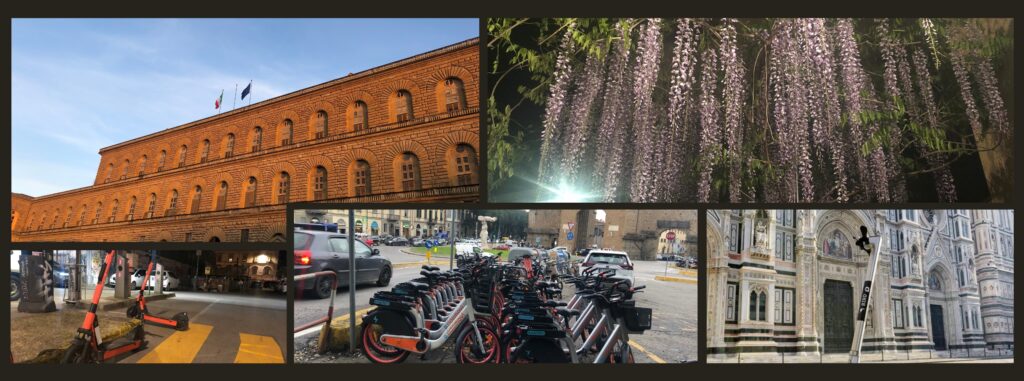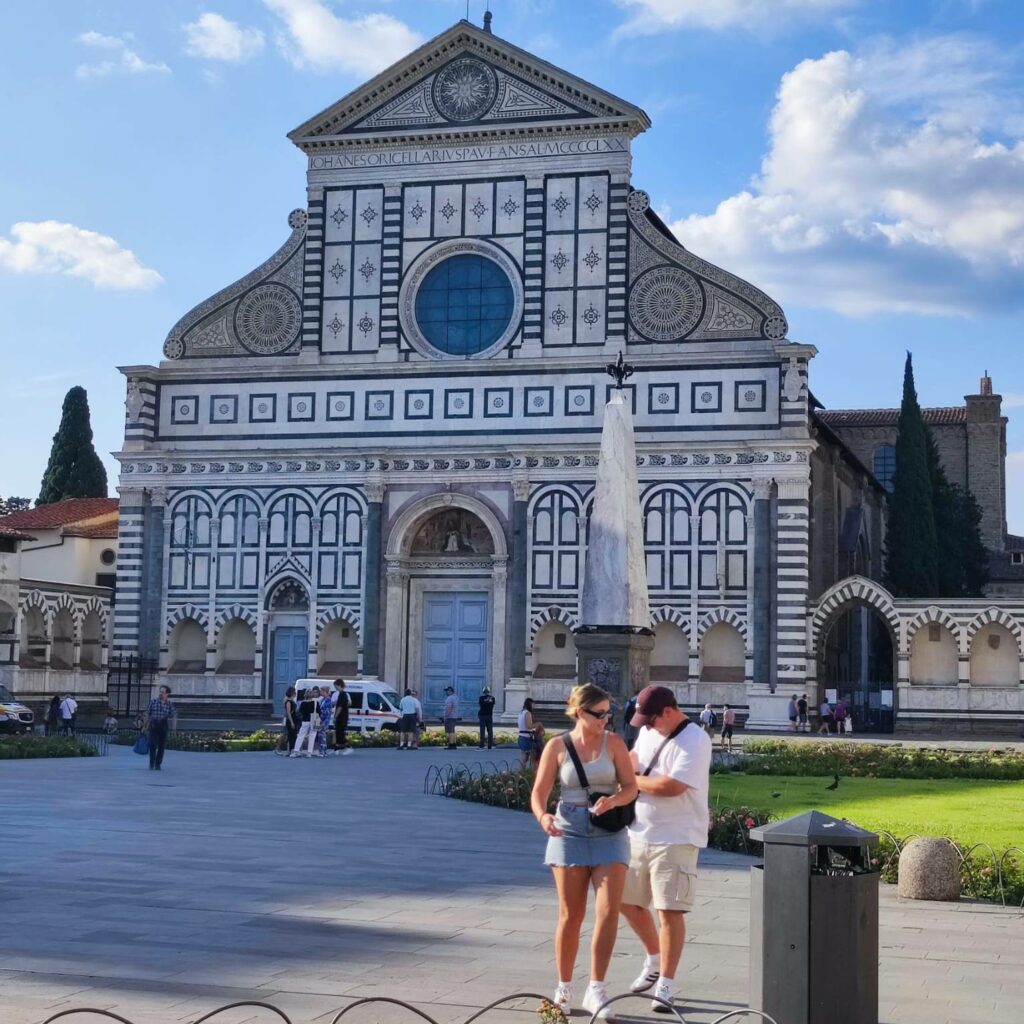Earth Month Special Feature
🌳 This strikingly beautiful city, the cradle of the Renaissance, might very well be experiencing a second Renaissance or, at the very least, it’s making mighty efforts to rebrand itself.
- Learn about the current state of Florence’s sustainability efforts
- See what micro-mobility looks like in the cradle of the Renaissance
- Cycle kilometers of bike paths both in the city and in the environs
- Use public transportation to discover hidden and off-the-beaten-track treasures
- Travel wisely and conscientiously, leaving a minimal environmental impact
Always an exceedingly popular tourist destination, Florence has never had problems drawing visitors from the world over who flock to experience the immensity of its artistic patrimony and glorious past. Once considered an obligatory stop on the Grand Tour, Florence was, and still is, a crucial locus for artists, humanists, poets, and students. Yet the international city with a small town feel experienced something of an identity crisis both leading up to as well as in the immediate wake of the pandemic. While Florence certainly never wanted for visitors, and attracts between 10 and 16 million a year, things had already begun to get ugly well before March 2020 when a nascent Covid-19 virus forced thousands of sightseers, temporary residents, and students to escape town. Italy was hit quickly and hard and, in the early days of the pandemic, there was no way of knowing what the city’s fate would be.
Suddenly Florence’s typically crammed narrow cobblestone streets, those in the heart of the downtown, grew barren and silent. For years Florentines had been fleeing the city center in search of more room, an easier life, and luxuries like parking and some outdoor space, but also to escape the mass over-tourism that has defined the last decade with hordes of tourists who pollute, create traffic, and drain and damage the city without leaving much revenue.
Apartments once inhabited by families had long been transformed into Airbnb’s. At times the only sounds one heard when walking around the heart of the city were the rumbling of roller suitcases on sidewalks and Google Maps providing a soundtrack of robotic directions being spit out in real time.

What’s changed in Florence?
When the pandemic hit those sounds were gone, the apartments and downtown were suddenly empty, and city leaders and administrators scrambled to bestow upon the city a new identity. Florence’s ambitious mayor, Dario Nardella, together with the local administration, educators, industry leaders, visionaries, and entrepreneurs, launched a campaign to give the city something of a makeover. It is not easy to touch up such a magnificent city, but it is not impossible to redefine it and give it a new purpose and a new life. A second Renaissance, if you will. The idea was to allure more businesses, especially startups, shared spaces, co-working hubs, more young, permanent residents, creatives, artisans, scholars, and digital nomads; a very specific type of visitor, one that cares about our planet.
While the city will continue to be a tourist magnet, the hope is that it will attract a more diversified population of sophisticated, engaged, and demanding visitors making it one of the world’s most sustainable destinations.
The 4-year anniversary of the first lockdown just passed in March, let’s take a look at how the city is faring in terms of its rebranding efforts.

How green is Florence?
It is one of the 100 EU member state cities that has been selected to join the EU Mission 100 Climate-neutral and smart cities by 2030. Mayor Nardella has happily embraced the challenge and, an avid cyclist, has continued to build bike paths with more on the way, there are scores of recommended bike itineraries, and many leading visitors outside the city center and into the stunning countryside in an ecologically responsible way. In conjunction with this, Eike Schmidt, the inventive and, at times, loathed former director of the Uffizi Galleries, which received around 5 million visitors in 2023, in a bold move to lure art lovers away from a too-clogged downtown, dusted off masterpieces, took them out of the basement, and returned them to their original location or gave them out on loan to small towns with some connection to the painting. There are even bike itineraries that take you from artwork to artwork.
Micro mobility is exceedingly popular and on the rise and already showing concrete data on CO2 emissions reduction. Through the ease of an app you can rent an electric bike, scooter, moped, Segway or electric car on almost any corner. Taxis are reliable, safe, and most are electric, but they are expensive, can be slower than public transportation, and scarce during high season. Public transportation is fast, contactless, clean, and cutting edge making the city a sustainable mecca of innovation. Tuscan food has always been sustainable but now restaurants are advertising their commitment to the environment, and new vegan locales open almost daily.

Green Things are rapidly evolving in Florence, Italy
For those who have been to Florence time and time again, but even for first-time visitors, here is a really creative way the cradle of the Renaissance is becoming the cradle of groundbreaking sustainable tourism and lifestyle.
While the public transportation system has always left much to be desired, it’s improving thanks to hybrid and electric buses but mostly to the creation and ongoing expansion of the city’s light rail network. There is a linked fantastic initiative (and PR move) for tourists and locals alike called “Florence by Tram”.
It includes guided itineraries of off-the-beaten-path museums and hidden jewels, all reachable by tram, encouraging people to use it, get to know it, and discover cool unknown spots in the process. This winning idea appeals to those on a budget (tickets are valid for 90 minutes and cost Euro 1.70, as of March you can swipe your debit or credit card and purchase directly on board), and to returnees who want to explore sites unseen. It also decreases traffic, moves people away from the swamped Medieval downtown, leads to great discoveries, and leaves a mere shadow of a carbon footprint.

